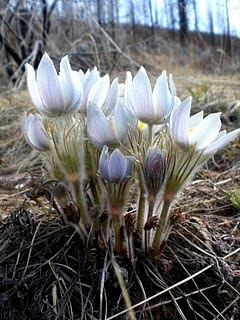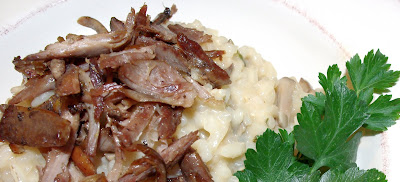And then you can pull them up/off, squish them, feed them to the birds or a compost heap and hope you got every last rotten #@$!

So much for straw as weed control...
This is the first time I've seen spurge flower and noticed the tiny seeds (they look like fruit, embiggen if you can't see it). Although you can compost this weed, the pile needs to be hot enough to kill the seeds, otherwise you'll just be doing the spurge an evolutionary favor when you add the compost to your garden next year.
Found a few hornworms (caterpillers) in the Ichiban yesterday. Look like Tomato Worms, right?

 Tomatoes and eggplant are both part of the nightshade family... as is tobacco, which is a hint for the correct identification of this bugger: it's a Tobacco Hornworm larva. Tomato worms are similar except they have green horns with black sides instead of red horns. These guys were pretty young so there's no color in their horns yet but the white striping on the sides gives them away (Tomato Worms have white 'v' markings). The Colorado State University Extension folks have a nice fact sheet here. The moths are on the big side; I kind of hope I can catch (and release) one if any caterpillars survive the purge. Hey, they're eating my eggplant! Without eternal vigilance, the tomatoes are next! (Apologies to drive-in movie critic Joe Bob Briggs.)
Tomatoes and eggplant are both part of the nightshade family... as is tobacco, which is a hint for the correct identification of this bugger: it's a Tobacco Hornworm larva. Tomato worms are similar except they have green horns with black sides instead of red horns. These guys were pretty young so there's no color in their horns yet but the white striping on the sides gives them away (Tomato Worms have white 'v' markings). The Colorado State University Extension folks have a nice fact sheet here. The moths are on the big side; I kind of hope I can catch (and release) one if any caterpillars survive the purge. Hey, they're eating my eggplant! Without eternal vigilance, the tomatoes are next! (Apologies to drive-in movie critic Joe Bob Briggs.) As for my last invaders, it's really not their fault. Truly, it's a case of being deemed a weed only because you're in the wrong place. That burst-out-of-your-chest alien look-alike is a pecan seedling.
We have red squirrels all over the neighborhood; they sit on the fence and laugh at our neighbor while taking one or two bites out of his ripest tomatoes and melons and leaving the rest for the birds. Of course they need something wet and delicious, it's hot and dry here and they have been working really hard... planting pecans all over our yard and garden.
 |
| pecan seedling in the wrong place |
There's not a total anti-immigration policy in the garden, a few weeks ago I welcomed a most auspicious visitor:
 |
| showing the distinctive white stripe |
 |
| Who is Mr. Toad? |
That's a Woodhouse's Toad. He's an insect eater and would have been allowed to stay but for this display...
 |
| chemical warfare via the parotid gland |
As more invaders appear in the garden I just have to remember to take the time to observe and appreciate them all... before raining death upon them.










































